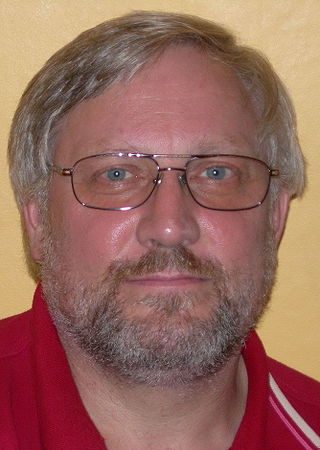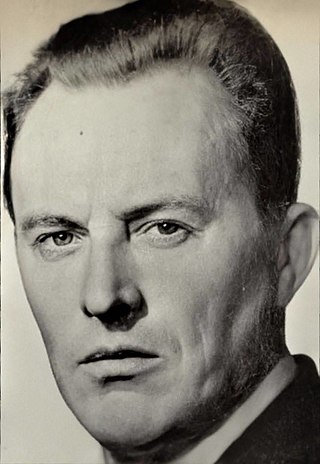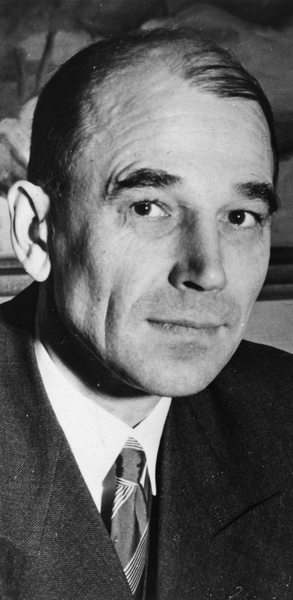Related Research Articles

The Norwegian resistance to the occupation of Norway by Nazi Germany began after Operation Weserübung in 1940 and ended in 1945. It took several forms:

The Communist Party of Norway is a communist party in Norway.

NSB El 9 is a retired class of three electric locomotives built by Thune for the Norwegian State Railways (NSB), with electrical equipment from Norsk Elektrisk & Brown Boveri (NEBB) and Per Kure. The locomotives were delivered in 1947 after a three-year delay caused by wartime sabotage in response to the German occupation of Norway. They were used nearly exclusively on the Flåm Line and Hardanger Line, two steep branch lines. The units were used on the Flåm Line until 1983, when they were replaced by El 11. They were then used as shunters until being retired in 1988. Two of the locomotives have been preserved.
Johan Strand Johansen was Norwegian Minister of Labour in 1945. From 1945-1949 and later from 1954-1957 he represented the Communist Party of Norway in the Parliament of Norway. His importance to posterity has been intimately tied to the dramatic split of the Communist Party in 1949, the so-called Furubotn purge.

Lars Gule is a Norwegian philosopher. He has graduated with a doctorate in philosophy, and is an associate professor. From 2000 to 2005 he was secretary general of the Norwegian Humanist Association. Gule became known to the general public in 1977 when after having joined the DFLP group, Gule was arrested in Beirut, Lebanon with explosives in his luggage intended for Israeli targets leading to a six-month conviction and subsequent deportation. He remains active as a pro-Palestine activist. Gule is often used by Norwegian media as an authority on questions regarding the Middle East, Islam and extremism.

Asbjørn Edvin Sunde was a Norwegian politician for the Communist Party of Norway, communist partisan during the Spanish Civil War, saboteur against the Nazi occupation of Norway during the Second World War, and a convicted Soviet spy. During the Second World War, from 1941 to 1944, Sunde's group, the Osvald Group, carried out approximately 39 acts of sabotage and assassination against the German occupation forces and Norwegian collaborators. In 1954 he was convicted by Eidsivating Court of Appeal of treason and espionage in favour of the Soviet Union, and sentenced to eight years in prison. He was released from prison in 1959 after serving two thirds of his sentence. He was expelled from the Communist Party of Norway in 1970.

Peder Furubotn was a Norwegian cabinetmaker, politician for the Communist Party and resistance member during World War II.
Hans Eng was a Norwegian physician and Nazi collaborator during World War II.
Josef Monsrud was a Norwegian forester and resistance member during World War II.
Stop Islamisation of Norway is a Norwegian anti-Muslim group that was established in 2008, although its history goes back to a group started in 2000. Its stated aim is to work against Islam, which it defines as a totalitarian political ideology that violates the Norwegian Constitution as well as democratic and human values. The organisation is currently led by, formerly by Arne Tumyr, and has several thousand members and supporters.
Aks 130000 or Aks 13 was a sabotage squad which existed from 1944 to 1945, during parts of the occupation of Norway by Nazi Germany in World War II. It was a part of the Norwegian resistance movement, specifically Milorg.

Svein Lavik Blindheim was a Norwegian military officer, known for his resistance work during World War II.

Asbjørn Johan Bryhn was a Norwegian police officer, known for his resistance work during World War II, and later head of the Norwegian Police Surveillance Agency.
A/S Per Kure, variously also known as A/S Per Kure Norsk Motor- og Dynamofabrikk and ASEA–Per Kure, was a manufacturer first of electric heaters and later of transformers. Founded by Per Kure in 1897, it was for most of its history based at Hasle in Oslo, Norway. The company was dissolved during the creation of Asea Brown Boveri in 1988.

The Norwegian State Railways was a state-owned railway company that operated most of the railway network in Norway. The government agency/directorate was created in 1883 to oversee the construction and operation of all state-owned railways in Norway. On 1 December 1996, it was demerged to create the infrastructure operator Norwegian National Rail Administration, the train operator Norwegian State Railways and the Norwegian Railway Inspectorate. The name was taken by the train operator, although the infrastructure operator remained a government agency and is the legal successor.
Lars Borgersrud is a Norwegian military historian and government scholar. His work has largely centered on World War II in Norway.
The Pelle group was a Norwegian resistance group that conducted acts of sabotage against the German occupation of Norway in Østlandet during the autumn of 1944.
Events in the year 1155 in Norway.

Martin Rasmussen Hjelmen was a Norwegian sailor and communist activist.

Norman Iversen was a Norwegian sailor, resistance member and communist politician.
References
- 1 2 3 4 5 6 7 8 Lars Borgersrud (2013-11-13). "I spissen for sabotasjekampen". Aftenposten. p. 5.
- ↑ Borgersrud, Lars (1995). "Osvald-gruppen". In Hans Fredrik Dahl (ed.). Norsk krigsleksikon 1940-45 (in Norwegian). Oslo: Cappelen. pp. 319–320. ISBN 82-02-14138-9. Archived from the original on 2010-01-05. Retrieved 2008-09-15.
- 1 2 Borgersrud, Lars (1995). "Sunde, Asbjørn". In Hans Fredrik Dahl (ed.). Norsk krigsleksikon 1940–45 (in Norwegian). Oslo: Cappelen. pp. 404–405. ISBN 82-02-14138-9. Archived from the original on 2011-07-24. Retrieved 2008-09-15.
- ↑ Guri Kulås (2015-02-16). "Rettssaka mot Asbjørn Sunde har vorte tema for ny dramadokumentar: Kaldkrigsdrama". Klassekampen. p. 24.
- 1 2 3 4 5 Uklart om likvidasjoner
- 1 2 3 4 Glemte sabotører Archived 2014-12-19 at the Wayback Machine . LO-Aktuelt nr. 11/2009
- 1 2 3 4 5 6 7 8 9 10 11 12 Jenny Heggsvik; Lars Borgersrud; August Rathke; Egil Christophersen; Ole-Jacob Abraham. "Prosjektbeskrivelse for det historiske forskningsprosjektet SABORG I BERGEN". Archived from the original on 2017-03-13. Retrieved 2014-02-20.
- 1 2 Kristen, krigshelt og sosialdemokrat Archived 2012-11-10 at the Wayback Machine
- 1 2 3 4 5 6 Saborgs historie må skrives
- ↑ Mathilde Becker Aarseth (2015-02-07). "Sier nei til monument". Klassekampen. p. 47.
- ↑ "East Railway Station". Oslo Byleksikon. Retrieved 31 January 2021.
- ↑ Christensen, 2006: p. 115
- ↑ Christensen, 2006: p. 114
- ↑ "PFU-sak 059/05". Norwegian Press Complaints Commission. Archived from the original on 2014-02-24. Retrieved 2014-02-19.
- ↑ "Uheldig skittkasting". Archived from the original on 2014-03-04. Retrieved 2014-02-18.
- 1 2 Saborg i Bergen må sikres
- ↑ "Vi trodde ikke vi skulle overleve – Leif Kjemperud – Motstandsmann fra Ringerike". Archived from the original on 2014-02-28. Retrieved 2014-02-23.
- ↑ ""Bekkestua" åpnet" (PDF). Heggedalsposten. October 2013. p. 36.[ permanent dead link ]
- ↑ Odd Bergfald: KGB "OPERASJON NORGE". HJEMMENES FORLAG, Oslo, 1975, side 96 og 103. ISBN 82-7006-151-4
- ↑ "Sjokkerende fra Borgersrud". Bergens Tidende. 2014-04-27.
- ↑ Trekker museum for retten
- 1 2 Steinar R. Paulsen; et al. (2015-05-09). "Hammer og hakekors i tigerstaden". Klassekampen. p. 41.
- ↑ Her kommer det omstridte Osvald-monumentet til Jernbanetorget
- ↑ Omstridt monument på plass 1. mai
- ↑ Korslund, Frode (2015-05-06). "Hammer eller slegge eller begge". Klassekampen.
- ↑ Laberg, Inge (2015-05-08). "Ganske sikkert en mukkert". Klassekampen.
- ↑ mukkert
- 1 2 Må krympe monument [Must shrink the monument]
- ↑ Russiske Anna Karpova om Osvald-monumentet: – Dette minner om monumentene fra sovjettiden
- 1 2 3 Bård Larsen (2015-05-08). "Skivebom om Osvald-monumentet". Dagsavisen. p. 48.[ permanent dead link ]
- ↑ "1. MAI-TALE V/NKPS INTER-NASJONALE SEKRETÆR SVEND HAAKON JACOBSEN ■ PÅ NORDRE GRAVLUND 2015 – 70 ÅR ETTER SEIEREN OVER FASCISMEN". Archived from the original on 2015-05-18. Retrieved 2015-05-10.
- ↑ Beskyldes for å sette opp kommunistpropaganda i Oslo
- ↑ "Nytt Osvald-monument skal vise Stanghelle som knuser Stalin".
- ↑ Sculpture stirs resistance debate
- ↑ Bjørgulv Braanen (2015-05-12). "Kjempet ikke Osvald-grupp for et fritt og selvstendig Norge? Motstandskampen". Klassekampen. p. 2.
- ↑ Halvorsen, Terje (2015-05-12). "Foreløpig bunnpunkt". Klassekampen.
- ↑ Sørheim, Erle Marie (2015-05-16). "Bråket rundt Osvald-monumentet på Jernbanetorget i Oslo er absurd, sett fra Berlin. Russernes inntogsmarsj". Klassekampen.
- ↑ War hero rejects military medal
- ↑ Oslogryta : motstandens hovedsentrum
- ↑ Pelle-gruppens minnesmerke avdukes neste måned
- ↑ Osvald-medlemmer kan likevel få Krigskorset
- ↑ paywall: Vigdis Alver (2014-06-14). "Med fare for sine liv spionerte de, var kurerer og likviderte forrædere" [While risking their lives, they spied, they were couriers and they assassinated traitors]. Dagbladet Magasinet. Retrieved 2014-06-15.
- ↑ Alf Skjeseth; Lars Borgersrud; Stein Buan; Morten Conradi. "Motstandskjemperen". 17 June 2022. Klassekampen. P. 36.
- ↑ Godt besøkt frokostmøte i LO i Bergen og omland. "August Rathke fortalte om sine opplevesler i SABORG under krigen. Han var rekrutteringsansvarlig i SABORG. [August Rathke told about his experiences in SABORG during the war. He was chief of recruiting in Saborg.]"
- ↑ Våre falne. p. 386.
- ↑ Torturert på det grusomste midt i Bergen sentrum
- ↑ Halvor Hegtun (2014-10-24). "Jødiske Sally skjulte seg ved nazileir i fem år". Aftenposten A-Magasinet.
- ↑ Halvor Hegtun (2014-10-24). "Jødiske Sally skjulte seg ved nazileir i fem år". Aftenposten A-Magasinet.
Johansen var medlem av Norges Kommunistiske Parti og med på det illegale arbeidet til Osvald-gruppen.